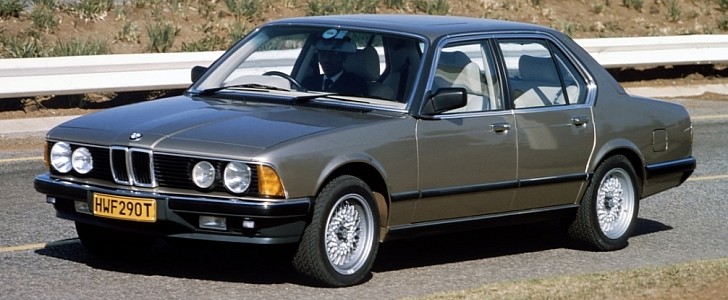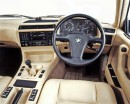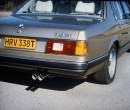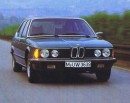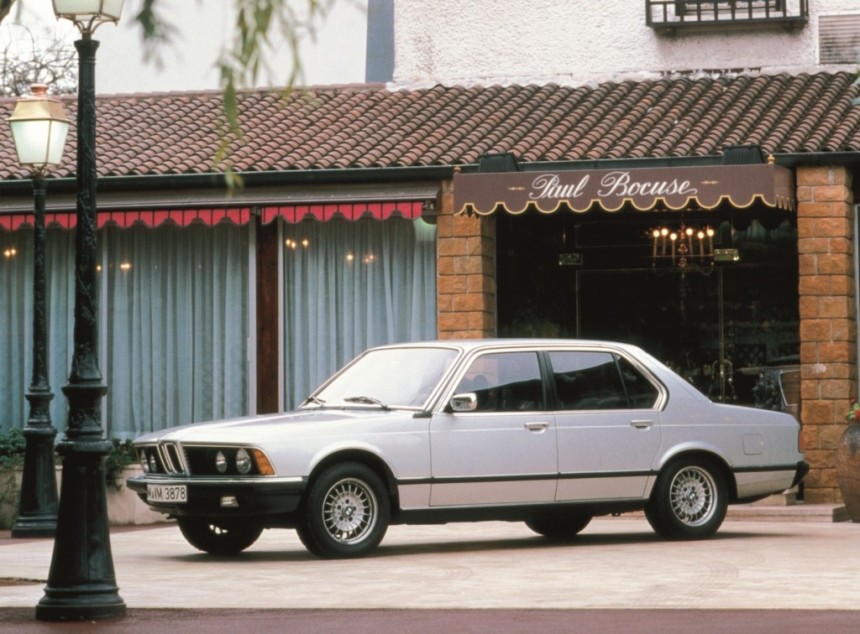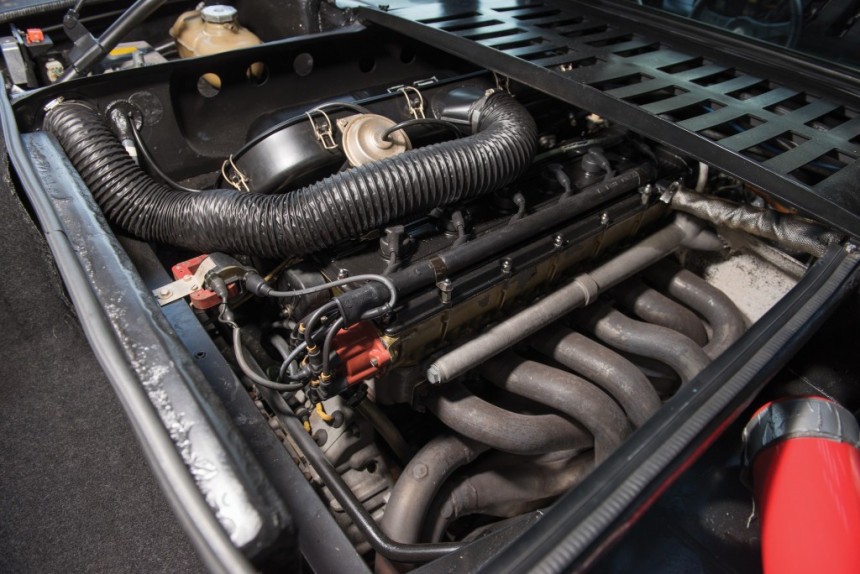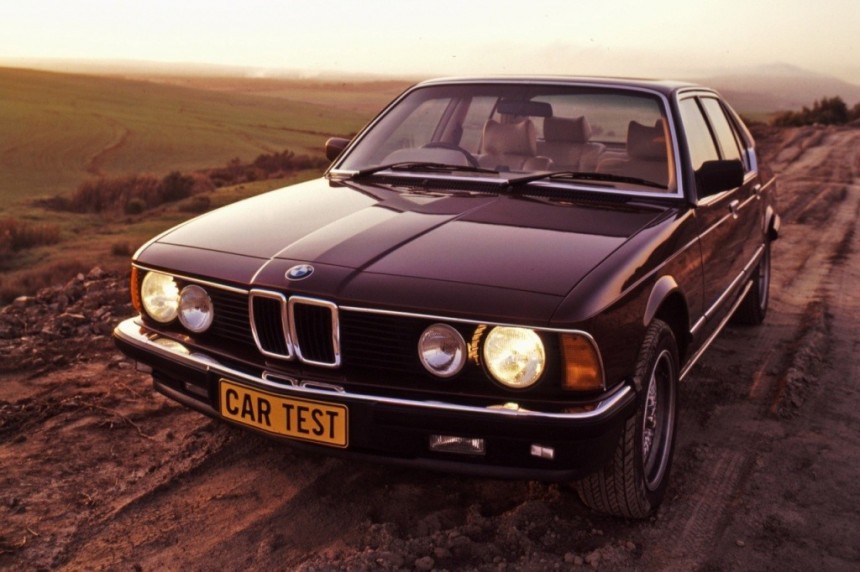The BMW 7 Series has been around for exactly 45 years as of 2022. The full-size sedan is now in its seventh generation, and almost every single redesign came with rumors that BMW might build an M7. But it never happened. At least not officially.
Sure, like every BMW out there, the 7 Series has always been offered in some sort of performance-oriented trim. The 750i version has become increasingly more powerful over the years, while the 760i brought a massive V12 rated at more than 400 horsepower into play in 2002. In 2009, output jumped to an even more impressive 536 horsepower.
The G11-generation marked the introduction of the M760Li. While not a full-fledged M model, the twin-turbo, 6.6-liter V12 that it came with pumped a whopping 602 horsepower. On top of that, the Alpine B7 featured a beefed-up V8 good for 599 horsepower.
In short, there was no real need for an M7 on the horsepower front in the last 10 years or so. But BMW still refused to offer a full-fledged competitor for the Mercedes-AMG S63. One that would use a proper M engine. But here's something you might have missed: BMW actually dropped an M unit in the 7 Series.
It happened back in 1984, about the same time when the first-generation E23 7 Series got its mid-cycle facelift.
And there are a couple of reasons why you might not have heard about it. First, it didn't get an "M" badge. Second, it was only sold in South Africa. But it was powered by a version of the M88 engine that BMW developed for the M1.
Now, why would the Germans develop a beefed-up 7 Series and not offer it globally? Well, the thing is, this South African Bimmer was born out of an engine bay packaging issue.
You see, when BMW introduced the 745i with the turbocharged, inline-six engine, engineers discovered that the mill would not fit in the right-hand-drive version of the 7 Series.
Because the turbo unit was located on the right side of the engine, it did not fit due to the steering column. Moving the turbo to the left wasn't an option either due to the engine's component configuration. Repackaging the mill was out of the question due to additional costs, so the Germans decided to go with the M88/3 engine.
Derived from the M88 that powered the M1, the first-ever M car introduced in 1978, the M88/3 straight-six displaced 3.5 liters and featured Bosch Motronic fuel injection. Thanks to a compression ratio of 10.5:1, it delivered 282 horsepower and 251 pound-feet of torque (286 PS and 340 Nm).
It might not sound like a lot nowadays, but it was BMW's most powerful street-spec engine in 1984. And at 282 horsepower, it generated an extra 32 horses compared to the regular, M106-powered 745i.
While it was different from the original M88 used in the M1, the M88/3 was a full-fledged M engine. Not only it was related to the race-spec powerplants that BMW used in Group 4 and Group 5 competition cars, but the M88/3 also powered the first M vehicles that followed the M1.
Specifically, the unit made its debut in 1983 in the E24-generation 6 Series. It powered the range-topping M635CSi, which was sold as the M6 in the United States and Japan with the S38 engine. In 1985, the M88/3 found its way into the first-ever M5. Both the M5 and M6 had the same output ratings as the South African 745i.
More commonly known as the 745i SA, the unofficial M7 arrived in South African showrooms in early 1984. But unlike the regular E23 7 Series, it wasn't put together in Germany. The sedans were assembled in South Africa from complete knock-down kits shipped from BMW's home country.
"Production" lasted until 1987, but only 209 cars were put together. All were sold on the domestic market, but the story goes that at least one 745i SA was exported to Europe, most likely to the U.K.
Of the 209 sedans produced, 192 were equipped with a ZF automatic gearbox, while 17 were fitted with a five-speed manual transmission.
The SA looked like a regular 745i on the outside but came with a Nappa leather-loaded interior. The latter would go on to become the Highline option in the 7 Series starting in 1986. Some early cars came with "M" logos on the speedometer and rev counter, but these were quickly removed from production.
At least one of the manual sedans was converted into a race car for the South African Modified Saloon Car Championship. The Group A conversion was performed by noted racer Tony Viana and mechanic Kobus van der Watt and approved by BMW's South African division.
Sporting the same M88/3 engine but upgraded to deliver more than 400 horsepower, the race-spec 745i SA won the 1985 championship against race-spec versions of the Ford Sierra, Alfa Romeo GTV, and Mazda RX-7.
Restored to its former glory in 2006, this car remains the only BMW-sanctioned motorsport application for the 7 Series.
The limited production run and the exclusive South African destination make the 745i SA the rarest iteration of the first-generation 7 Series. However, these cars rarely come up for sale, and the number of examples that are still around is unknown.
The G11-generation marked the introduction of the M760Li. While not a full-fledged M model, the twin-turbo, 6.6-liter V12 that it came with pumped a whopping 602 horsepower. On top of that, the Alpine B7 featured a beefed-up V8 good for 599 horsepower.
In short, there was no real need for an M7 on the horsepower front in the last 10 years or so. But BMW still refused to offer a full-fledged competitor for the Mercedes-AMG S63. One that would use a proper M engine. But here's something you might have missed: BMW actually dropped an M unit in the 7 Series.
It happened back in 1984, about the same time when the first-generation E23 7 Series got its mid-cycle facelift.
Now, why would the Germans develop a beefed-up 7 Series and not offer it globally? Well, the thing is, this South African Bimmer was born out of an engine bay packaging issue.
You see, when BMW introduced the 745i with the turbocharged, inline-six engine, engineers discovered that the mill would not fit in the right-hand-drive version of the 7 Series.
Because the turbo unit was located on the right side of the engine, it did not fit due to the steering column. Moving the turbo to the left wasn't an option either due to the engine's component configuration. Repackaging the mill was out of the question due to additional costs, so the Germans decided to go with the M88/3 engine.
It might not sound like a lot nowadays, but it was BMW's most powerful street-spec engine in 1984. And at 282 horsepower, it generated an extra 32 horses compared to the regular, M106-powered 745i.
While it was different from the original M88 used in the M1, the M88/3 was a full-fledged M engine. Not only it was related to the race-spec powerplants that BMW used in Group 4 and Group 5 competition cars, but the M88/3 also powered the first M vehicles that followed the M1.
Specifically, the unit made its debut in 1983 in the E24-generation 6 Series. It powered the range-topping M635CSi, which was sold as the M6 in the United States and Japan with the S38 engine. In 1985, the M88/3 found its way into the first-ever M5. Both the M5 and M6 had the same output ratings as the South African 745i.
"Production" lasted until 1987, but only 209 cars were put together. All were sold on the domestic market, but the story goes that at least one 745i SA was exported to Europe, most likely to the U.K.
Of the 209 sedans produced, 192 were equipped with a ZF automatic gearbox, while 17 were fitted with a five-speed manual transmission.
The SA looked like a regular 745i on the outside but came with a Nappa leather-loaded interior. The latter would go on to become the Highline option in the 7 Series starting in 1986. Some early cars came with "M" logos on the speedometer and rev counter, but these were quickly removed from production.
Sporting the same M88/3 engine but upgraded to deliver more than 400 horsepower, the race-spec 745i SA won the 1985 championship against race-spec versions of the Ford Sierra, Alfa Romeo GTV, and Mazda RX-7.
Restored to its former glory in 2006, this car remains the only BMW-sanctioned motorsport application for the 7 Series.
The limited production run and the exclusive South African destination make the 745i SA the rarest iteration of the first-generation 7 Series. However, these cars rarely come up for sale, and the number of examples that are still around is unknown.
